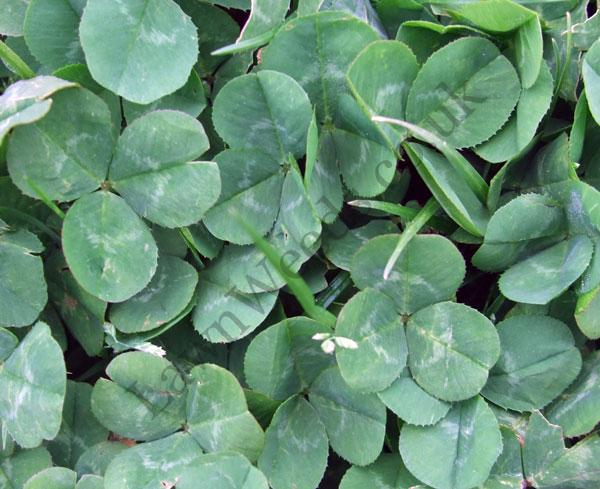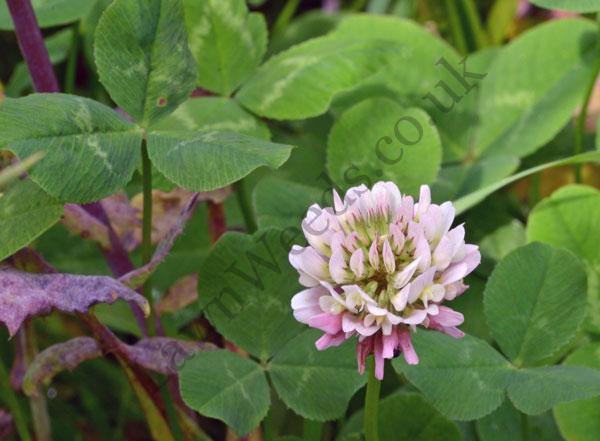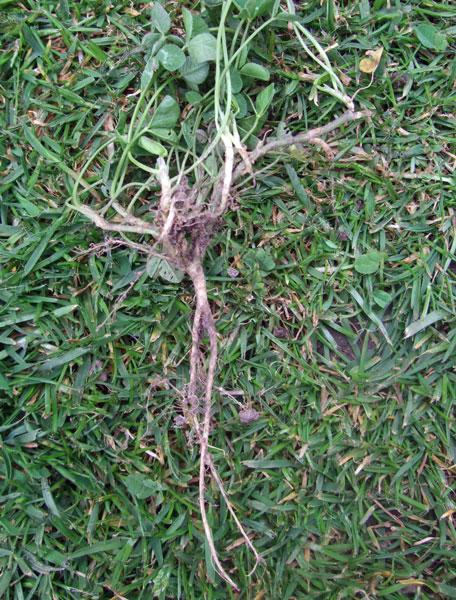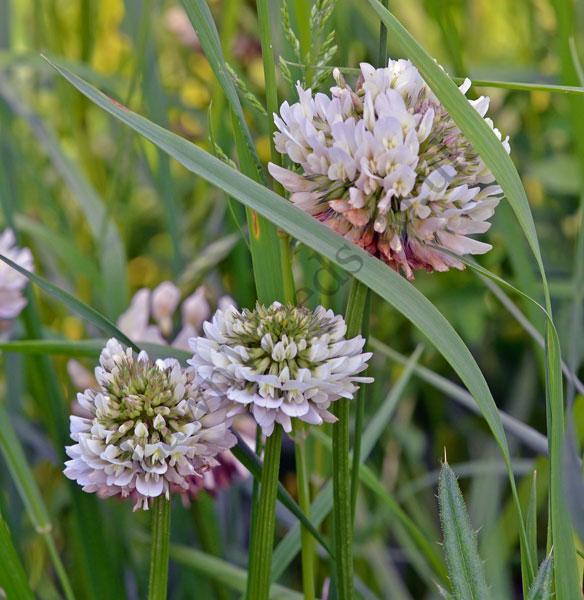 Botanical name: Trifolium repens
Botanical name: Trifolium repens
Family: Fabaceae
Aliases: Dutch clover
General information
White clover is a herbaceous, perennial weed and arguably the most common and recognisable of the clover weeds in turf.
This common weed can grow in a range of conditions and is often found in grassy areas and managed turf, and can adapt to close mowing.
It spreads rapidly by creeping overground runners known as ‘stolon’s. It is also capable of spreading by seed if conditions are favourable.
It is often found in moist soils with a deficiency in nutrients. In fact white clover is often a good indicator that the turf is low in nitrogen.
It can also tolerate dry conditions as it anchors itself into the ground with a deep tap root. It is common to see white clover looking nice and green during dry summers, while the grass has suffered and turned brown.
Like other plants in this family it has the ability to ‘fix nitrogen’, meaning it draws nitrogen from the atmosphere and is able to store it, in the root nodes.
In the past, before selective herbicides were used, white clover was often incorporated into grass seed mixtures. This is because it is able to thrive in poorer soils, where grass doesn’t do so well. Even today many people still encourage white clover in garden lawns.
White Clover Identification
- Leaves: The hairless leaves alternate with one another and are composed of 3 (4 if you are lucky) trifoliate leaflets, each leaflet is round to tear shaped. A whitish coloured crescent can sometimes be seen near the bottom of each leaflet. The leaflets typically measure between 6mm and 12mm across.
- Flowers: White clover produces clusters of flowers between May and October, with the round white, sometimes tinged with pink flower heads measuring between 15 – 20mm across. The flowers attract a variety of insects, especially bees.
- Roots: The roots are generally fibrous and shallow, but it is not unusual for a taproot to be produced.
White Clover Images (click image to enlarge)
More images and free downloads of white clover
Prevention and control
Hand weed individual plants, before the weed has chance to become widespread. Hand weeding is best undertaken when the soil is moist, as removal of the weed is generally easier than if the soil is too dry.
Ensure the turf receives adequate nutrition, especially nitrogen, by applying a balanced feed program during the growing season. White clover often thrives in weak areas of turf that are deficient in nitrogen.
Mow the turf on a regular basis to prevent seed head formation, which will help prevent the weed from spreading further.
Rake the weed into an upright position prior to mowing the lawn or turf. This will help remove leaves, stems and flower heads, eventually weakening the weed. Always remove the clipping by using a grass box to prevent the spread of the weed.
White clover is susceptible to selective herbicides and in most cases, it can be controlled with a single application. For best results choose a weed killer that contains mecoprop-p as this has proven very effective against all clover type weeds.
If the infestation is not too severe, consider spot treating the weed to avoid unnecessary use of chemicals.
Recommended chemicals for white clover control
2,4-D + Mecoprop-p
Fluroxypyr + Clopyralid
Fluroxypyr + Mecoprop-p
Dicamba + Mecoprop-p
Recommended products for white clover control
Professional products (The user requires the appropriate certificate/s to apply these products)
Headland Relay Turf (Mecoprop-p, Dicamba, MCPA)
React Ultra (Mecoprop-p, Dicamba, MCPA)
Everris Praxys (Clopyralid, Fluroxypyr, Fluosulam)
Bayer Longbow (Mecoprop-p, Dicamba, MCPA)
Barclay Holster XL (2,4-D, Fluroxypyr, Dicamba)
Mascot Greenor (Clopyralid, Fluroxypyr, MCPA)
Vitax Esteem (2,4-D, Clopyralid, MCPA)
Products available for non-professional use (These products are available from garden centres and DIY
stores)
Verdone extra (Clopyralid, Fluroxypyr, MCPA)
Resolva lawn weed killer (2,4-D, Mecoprop-p, MCPA, Dicamba)
Doff lawn spot weeder (2,4-D, Mecoprop-p, Dichlorprop-p)
Vitax Lawn Clear (2,4-D, Clopyralid, MCPA)
Weedol lawn weed killer (Clopyralid, Fluroxypyr, MCPA)






